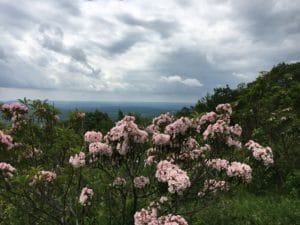Hello Fellow Readers,
Saturday night, after a long day exhibiting at a Home & Garden event, I did what I rarely do. I settled down in front of the TV to veg out. Legs elevated on pillows to lessen my foot fatigue, clicker in hand, I stumbled upon a movie based on a true story titled Dare to be Wild, about a landscape designer Mary Reynolds of Ireland. Like any good movie to veg out by, especially when it’s just us girls (Ellie and I), it was a love story. But beyond the human love story was a story about the storyteller’s love of the land.
Reynolds apprentices with an established landscape architect who took credit for her garden designs then let her go, keeping her book of hand-rendered drawings. Uncertain of what’s next, Reynolds bravely submits a proposal to exhibit at the prestigious London Chelsea Flower Show and is accepted. She struggles for funding, travels the world to study the rhythms of nature and plants, she falls in love, and in the final hour, everything comes together. Even her plants that suspiciously withered rebounded in time for opening day. In the movie, as in real life, Mary Reynolds at age 28 became the youngest gold medal winner of the Chelsea Flower Show in 2002 “with an entry that included weeds, rabbit droppings, and giant stone thrones,” reported Smithsonian Magazine (June 2016).
Digging further, I learned Reynolds authored The Garden Awakening Designs to Nurture our Land and Ourselves, first published in England in 2016 by Green Books. The intriguing table of contents includes a section on Restoring Wellness which is broken down into chapters titled: Sacred Spaces, Nature is Stronger than Nurture, Finding your Roots, and Restoring Health to your Land. Good old Amazon allows for a sneak peek, so I clicked through to Forest Gardening which talks about designing in layers that “imitate the tiered structure of natural woodlands but have a higher proportion of edible species.” The layers – canopy trees, shrubs, non-woody plants, ground cover, underground plants, and vines – all cohabitate restoring fertility to the land while producing food in a natural environment. From the reviews, it sounds as though there’s a meaty measure of spirituality in her book, but plenty of references to plants with charts of characteristics, cultural requirements, and the roles they serve in creating biodiversity. I’m hooked! The book is now on my wish list.
Mary Reynolds also gave a Ted-talk a while back and described herself as a “reformed garden designer” which of course made me smile. Now rather than designing and installing beautiful gardens then fighting “to keep them the way we want them to be” she designs environments that “let nature do what it does.” While the magnitude of what’s going wrong with our world seems insurmountable, if we each do our part in sound stewardship of the bit of land we are blessed to live on, no matter how small, we can heal our dear earth. One garden at a time. Garden Dilemmas? AskMaryStone@gmail.com
Links you may enjoy…
Mary Reynolds TEDxWexford Talk: The Garden Awakening, Tomorrow Imagined |
Smithsonian Magazine article on Mary Reynolds: The Unlikely, Charming Designer Who Is Changing the Face of Gardening, June 2016




